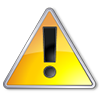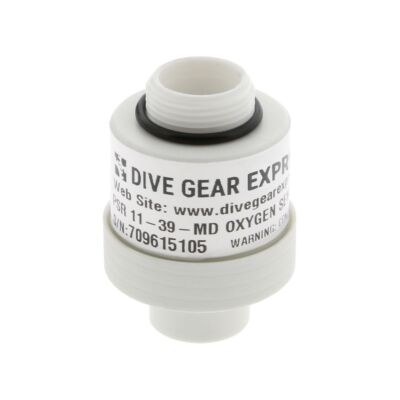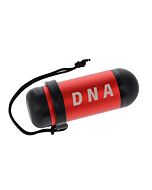PSR-11-39-MD Oxygen Sensor (R-22D)
- Oxygen sensor with Molex connection
- Accuracy within +/- 2% of full scale
- Response time is 6 seconds
- Dated test results included with each sensor
- Commonly used in the scuba industry
PSR-11-39-MD Oxygen Sensor (R-22D)
- Buy 3 for $84.00 each and save 6%
- Buy 4 for $81.00 each and save 9%
- Buy 5 for $79.00 each and save 11%
Factory fresh, this oxygen sensor is never more than four months old when we ship to you. Due to the unique nature of the product, this diving grade oxygen sensor is NON-RETURNABLE. Your complete satisfaction is our goal, so please consider carefully before purchase.
NOTE: Because of our large unit volumes on this very popular sensor, we are able to offer bulk pricing discounts for either 3-Pack, 4-Pack or 5-Pack purchases of this specific model.
The Analytical Industries (AI) PSR-11-39-MD, with a 3-pin Molex connector is an R-22D type sensor; compatible with the Maxtec MAX-305F sensor, NRC D-05 sensor. Analytical is transitioning the color of the plastic body from black to white in order to improve production efficiencies, you may receive either color but the sensor is otherwise unchanged.
The Analytical brand PSR-11-39-MD is used in the Dive Rite O2ptima, Poseidon Se7en & Discovery VI, Hollis Prism2 & Explorer MK2, all current KISS models, Hammerhead, Liberty, SubGravity and many other brands of rebreathers. The PSR-11-39-MD is NOT compatible with the ISC Megalodon or the Mares rEvo. The sensor is also compatible with the Cochran Lifeguard, Apeks DSX analyzer accessory, Divesoft DNA, DiveTek O2, DiveNav cootwo, Mares EANx, and OxySpy breathing gas analyzers.
Features
- Accuracy within +/- 2% of full scale
- Response time is 6 seconds
- Conformal coating
- Temperature compensated
- Hydrophobic membrane
AI brand diving sensors ship with the documentation of a final pressure test for each sensor. The sensor is tested at approximately one ATA in air and 100% oxygen, then tested again at 1.8 ATA in oxygen, and the millivolt readings are recorded for all measurements. The results document that the cell is within specifications for current and linearity up to a PO2 exceeding 1.6 ATA. The dated test results are included in the package with each individual sensor.
Usage Note: The usual mV range for R-22D type cells is from 8 mV to 14 mV in air, i.e. 21% oxygen at 1 Atmosphere Absolute, with 10 mV being typical for a sensor that has been in service. At 14.0 mV the theoretical value in 100% 0xygen and 1.0 ATA would be 66.92 mV. Some electronics will refuse to calibrate at the upper end of the range (i.e. high 60's) because oxygen sensors very rarely put out that much current by the time they reach the hands of the consumer and are put in to service. However, our sensors are fresh enough that it can happen, particularly if they were just removed from the sealed package and the temperature or barometric pressure that day is high. If so, allowing the sensor to acclimate in air or Nitrox overnight will usually resolve the high reading calibration issue. It's also true that electronics will may refuse to calibrate at the lower end of the range. If so, check the connection by moving the sensor to another position in the rebreather sensor array or a different analyzer and if the low reading calibration issue persists then replace the sensor.
- 10.0 mV = theoretical mV at PO2= 1.0 ATA is 47.80
- 11.0 mV = theoretical mV at PO2= 1.0 ATA is 52.58
- 12.0 mV = theoretical mV at PO2= 1.0 ATA is 57.36
- 13.0 mV = theoretical mV at PO2= 1.0 ATA is 62.14
- 14.0 mV = theoretical mV at PO2= 1.0 ATA is 66.92
We are a high volume retailer of AI brand diving sensors, assuring that replacement sensors ordered from Dive Gear Express are always among the freshest available. Due to the unique nature of the product, this diving grade oxygen sensor is NON-RETURNABLE. Your complete satisfaction is our goal, so please consider carefully before purchase.
| Brand | Analytical Industries |
|---|---|
| SKU | ADI-PSR-11-39-MD |
| Weight | 0.250000 |
Customer Reviews
 WARNING
WARNING
Dive Gear Express has not done any verification or validation of oxygen sensors and disclaims any responsibility and liability for the use of oxygen sensors in rebreather applications. Verification and validation of specific oxygen sensors for use in rebreather applications is the responsibility of the equipment user and/or original equipment manufacturer.
Oxygen sensors are one of the very few items on our website that are NOT returnable, because we can't know with absolute certainty how they were handled once delivered. Additional shipping and handling of the return can also degrade performance. They are critical to safety in rebreather diving, and our customers have a reasonable expectation of receiving as factory fresh a product as possible from Dive Gear Express. Your complete satisfaction is our goal, so please consider carefully before purchase.
Oxygen Sensor Life in Rebreathers
When any new oxygen sensor is removed from the sealed package, it can take anywhere from a few minutes to several hours for it to acclimate and the millivolt output to stabilize. We recommend waiting as long as practical before calibrating your rebreather with a freshly opened sensor.
Oxygen sensors are a consumable like a battery; their service life can vary considerably depending on usage, oxygen exposure and environmental factors. Three conditions are particularly notable for shortening the life of an oxygen sensor, regardless of brand.
- Impact - Inside the oxygen sensor are tiny wires and seals that are very fragile. Sensors subjected to g-force shocks explains why a new sensor will come out of the package DOA; high, low or zero millivolt output; or with erratic behaviors.
- Heat - The warmer the sensor, the shorter the life. That can happen during shipping or storage, especially in tropical climates. Their life can also be significantly shortened when the rebreather sits in the sun and gets very hot.
- Prolonged Oxygen Exposure - Leaving elevated oxygen mixtures in the breathing loop, which often happens following a calibration, will substantially reduce the life of a sensor. Heavy use of your rebreather will also shorten the life of the sensor.
As oxygen sensors reach end-of-life they can become unpredictable, causing problems that are sometimes difficult to diagnose. The expiration date printed on some sensors is not a guarantee they can remain in-service until that date; it is a caution against use after that date. In our opinion, there is not ANY in-the-field test or dive procedure that will properly validate a oxygen sensor for use beyond it's expiration date or recommended service life.







